13 Mar 2018 | Uncategorized
[vc_row][vc_column][vc_single_image image=”95278″ img_size=”full”][vc_column_text]Join Index on Censorship chief executive Jodie Ginsberg and nominees for this year’s Index Freedom of Expression Award for Journalism for a conversation about the challenges for local journalists reporting from some of the world’s most difficult environments.
Different forms of censorship can threaten journalists across the globe, be it state restrictions, political corruption, social taboos, all of these are barriers that nominees have had to push through to bring a story to light.
Index on Censorship’s Freedom of Expression Awards exist to celebrate individuals or groups who have had a significant impact fighting censorship anywhere in the world. Awards are offered in four categories: Arts, Campaigning, Digital Activism and Journalism.
The evening will be celebrating past and potential future winners in the field of journalism.
Speakers include Wendy Funes, a journalist based in Honduras, whose father and friends are among the reporters killed there for their work – killings for which no one has ever been brought to justice. As well as reporting on corruption in the country, Funes covers violence against women in Honduras, where one woman is killed every 16 hours. Funes is one of four nominees shortlisted for the Index on Censorship Freedom of Expression Award for Journalism, which will be announced on April 19 in London.
Zaina Erhaim is a former Index Freedom of Expression Award winner and the winner of the 2015 Peter Mackler Award for Courageous and Ethical Journalism. A Syrian journalist, Erhaim has been working for IWPR in Syria and Turkey since 2013 supporting journalists, civil society groups, and youth and female activists. Since February 2015, Erhaim has led the Women’s Blog project at IWPR, carrying pieces by new writers with no background in professional journalism, talking about the hardship of daily life and the horrors of war. Erhaim has been instrumental in bringing these stories out.
Jodie Ginsberg is a former foreign correspondent and was London bureau chief for Reuters from 2007-2011.[/vc_column_text][/vc_column][/vc_row][vc_row][vc_column width=”1/3″][vc_single_image image=”80210″ alignment=”center”][vc_column_text]
Jodie Ginsberg
[/vc_column_text][/vc_column][vc_column width=”1/3″][vc_single_image image=”74834″ alignment=”center”][vc_column_text]
Zaina Erhaim
[/vc_column_text][/vc_column][vc_column width=”1/3″][vc_single_image image=”98502″ alignment=”center”][vc_column_text]
Wendy Funes
[/vc_column_text][/vc_column][/vc_row][vc_row][vc_column][vc_column_text]
This event has been cancelled. We apologise for any inconvenience.
[/vc_column_text][/vc_column][/vc_row]
8 Mar 2018 | News and features, Turkey, Turkey Uncensored
[vc_row][vc_column][vc_media_grid grid_id=”vc_gid:1520507629250-860b1635-f01a-8″ include=”98413,98412,98411,98410,98409,98408″][vc_column_text]The only online feminist news website in Turkey is marking International Women’s Day under state censorship. Access to the website of Diyarbakır-based Jin News (“Jin” meaning “woman” in Kurdish), which is entirely run by women and specifically focuses on news relating to women, was blocked seven times within just one week at the end of January. At present, the site is inaccessible from Turkey.
The pressure, however, hasn’t discouraged Jin News’ journalists. “We have always shown that we have alternatives, and we are continuing to show it,” Jin News Editor Beritan Elyakut told Index on Censorship. While relying on social media and the use of VPNs, Jin News announced a new TV channel to mark the symbolic day, which has a double significance for them. JINHA, the first news agency run by women in the entire country, was also established on an International Women’s Day six years ago.
Pressure was no stranger to them either: They were shut down not once but twice, more than any other news outlet in the country under the present state of emergency. First, JINHA was closed by decree in October 2016. Gazete Şujin, JINHA’s successor, was only allowed to exist for nine months before another decree ordered its closure in August 2017.
But still, from its ashes, Jin News was born, taking over JINHA’s legacy: a style of news writing that presents women “as subjects, not objects.” The site takes care to use conscientious language, such as using the word “murdered” instead of “killed” to emphasise male violence. They also avoid highlighting details that indirectly justify violence against women (by refusing, for example, to note that she was seeking a divorce) or providing unnecessary descriptive details in cases of sexual attack. Then there is the strict use of first names instead of family names – a practice adopted by the present article to provide a glimpse of their methodology.
“When covering women, we had to think until the smallest details. We chose not to employ the family name to break the perception that family lineage descended from men. If we say ‘Beritan Elyakut’ in the beginning of the article to introduce a person, we then use the name distinguishing that person as a subject,” Beritan said. Even the highest-ranking officials, including two former co-chairs of the pro-Kurdish Peoples’ Democratic Party (HDP) who are currently under arrest, Figen Yüksekdağ and Selahattin Demirtaş, wouldn’t escape the rule.
This also meant a different approach in the choice of topics. “We don’t just cover news on sexual attack, sexual abuse or harassment. We started to cover stories reflecting women as strong individuals. We reported on pioneering women. We focused on economy and ecology. We made women visible in politics, highlighted them and gave them a voice,” Beritan said. [/vc_column_text][/vc_column][/vc_row][vc_row][vc_column width=”1/4″][vc_icon icon_fontawesome=”fa fa-times” color=”black” background_style=”rounded” size=”xl” align=”right”][/vc_column][vc_column width=”3/4″][vc_column_text]
“Our people know how to live under difficult situations. Kurdish women know how to resist. JINHA was closed, and Şujin was created. Şujin was closed and Jin News was created, which means we can reinvent ourselves over and over.”
[/vc_column_text][/vc_column][/vc_row][vc_row][vc_column][vc_column_text]Encouraging women to speak up
To ensure that women’s voices are not muted, Jin News uses exclusive testimonies and quotes from women in their reports. As she walks to the popular market of Bağlar in Diyarbakır, reporter Şehriban Aslan tells Index on Censorship that women’s reactions are always very positive when they introduce themselves as a Kurdish agency covering women.
Once she arrives at the market, Şehriban and her colleague, Rengin Azizoğlu, walk quietly as they search for women running stores. The subject is the destruction of a community health centre, which was turned into a police station by a government-appointed trustee after the municipality’s democratically elected co-mayors were thrown in jail.
The effect is immediate as they enter a gift shop. One of the vendors agrees to be interviewed. “There is this perception in society that a woman can’t work. You’ve broken it,” Şehriban tells her. “Absolutely,” the woman answers, without a flinch of hesitation. As the interview nears its end, Şehriban asks her if she has any messages to other women. “Women should absolutely work,” she says. “They shouldn’t submit to men.”
“Women feel comfortable and confident when they speak to us,” Şehriban says. “Being a Kurdish agency also helps.”
“Which outlet are you from?” a man asks her as she sneaks out of a shop. “We are the free media,” Şehriban says, using the expression that Kurds refer to their own media outlets. “Ah, you are more than welcome,” he replies.
Münevver Karademir, Jin News’ Kurdish-language editor, also stresses the importance of the encouragement factor. “When you give them confidence to express themselves, women embrace you,” Münevver says. “When you tell any shop vendor ‘I am an agency run by woman who works on the problems of women,’ her attitude becomes very different. She feels safe. She is able to tell you what she is going through.”
Jin News journalists are also eager to expand the know-how they are building with other outlets, especially male journalists. They have a project to prepare a dictionary on non-discriminatory news language. “We were planning to come together with men and organize training on ‘how to design a news story’ and ‘how to use women-friendly language in news articles’ but haven’t been able to due to the conditions [in the region],” Beritan says.
However, their mere presence has already started to raise some awareness. “Some journalists, men most of the time, ask us: ‘Would you check this story and see if we have used correct language?’ They now feel that concern,” she says. One of the most important successes for Beritan has been to show that women were more than capable of doing journalism – often better than men. “We saw that women were fast as well. But their speed also seeks to share a story in the best way possible. They were meticulous.”
Women journalist establish platform against pressure
According to Beritan, Jin News’ policy of collecting women’s voices alone was more successful in the east than the west of Turkey. This is the result of the strict “co-chair parity” policy launched by the HDP, which ensured that women assumed senior positions in Kurdish municipalities. However, after trustees occupied most HDP-led municipalities, Jin News not only lost its interlocutors – most trustees are men – but lost an important source of revenue. Indeed, many women co-chairs ensured that the municipality subscribed to their services and encouraged the agency’s activities.
Since the military crackdowns in urban centers in the region, journalists have become a target of state security agencies, and arrests and detentions have become common practices.
“The state wanted to seclude us at home through detentions. When that didn’t work, they tried to shut down the outlets entirely,” Beritan says as she learns that one of their reporters, Durket Süren, has been charged with “membership in and financing of a terrorist organisation” after being detained a few days earlier at a routine checkpoint. Durket was eventually released by a court but was subjected to a travel ban and ordered to sign in regularly at a police station.
Durket is hardly the only Jin News journalist facing criminal charges. Former JINHA reporter Zehra Doğan is currently serving a two-year, nine-month prison sentence for “spreading propaganda for a terrorist organisation.” She was convicted for publishing the testimony of a 10-year-old girl affected by the Turkish military operation on the town of Nusaybin in an article from December 2015. Also a painter, Zehra received jail time for “drawing Turkish flags on destroyed buildings” in a painting copied from a real photograph in which Turkish flags can be seen on buildings destroyed by Turkish forces. Beritan Canözer, the agency’s Istanbul reporter, and Aysel Işık have also served prison sentences. Many have been detained, and about 10 reporters are currently on trial. The agency also receives regular threats.
Ayşe Güney, a reporter for the Kurdish Mezopotamya Agency and spokeswoman for the Mezopotamya Women Journalists Platform, told Index on Censorship that state violence has become routine practice. “In a province like Şırnak, our reporters are constantly subjected to verbal harassment or threats. Many avoid going alone to villages or certain neighbourhoods. They are threatened, from being kidnapped to being abused or raped. Threats may be verbal for now, but there is a serious attempt to intimidate them,” she says.
The platform was established in 2017 on another symbolic day, May 3 Press Freedom Day, to ensure that women can fight together against common issues. Those include social issues – such as unemployment after the repeated closure of Diyarbakır-based Kurdish media outlets – but also against all kinds of violence. “Thanks to this association, we wanted to help our friends who are detained, arrested or subject to harassment from sources, attacked or abused by the police. We also wanted to make the pressure visible,” Ayşe says.
The latest woman journalist to be arrested by police is Seda Taşkın, who was reporting a story in the province of Muş. Seda was first released on probationary conditions, only to be arrested a month later in Ankara due to her reporting and tweets.
According to Ayşe, it is no coincidence that the women’s journalistic experiment began in Diyarbakır and not – as some might have expected – in Istanbul. “Our people know how to live under difficult situations. Kurdish women know how to resist. JINHA was closed, and Şujin was created. Şujin was closed and Jin News was created, which means we can reinvent ourselves over and over,” Ayşe says. “We are speaking here about women’s freedom and not gender equality. This is something that goes way beyond it.”
Ayşe also said she wished to make a call on all women journalists in Turkey to engage in solidarity. “There are almost no journalists here who haven’t had a trial opened against them. Either they have been in and out of prison or have to report at a police station every two or three or even five days. This means they can’t leave the city, which is becoming an open-air prison,” Ayşe says. “But it doesn’t happen only to Kurds anymore. It happens everywhere. So this is the time to act together.”[/vc_column_text][/vc_column][/vc_row][vc_row][vc_column][vc_basic_grid post_type=”post” max_items=”12″ style=”load-more” items_per_page=”4″ element_width=”6″ grid_id=”vc_gid:1520507629256-32297f2b-810d-7″ taxonomies=”8607″][/vc_column][/vc_row]
8 Mar 2018 | Awards, News and features
[vc_row][vc_column][vc_column_text]From a journalist issued death threats for her investigative work and a activist who helps women and girls learn computer programming to foster female economic independence, to an organisation that provides support for female victims of online harassment, the 2018 Index on Censorship Freedom of Expression Awards shortlist includes women who work with bravery and persistence in the face of adversity.
On International Women’s Day, we celebrate and honour the amazing women on our awards shortlist.
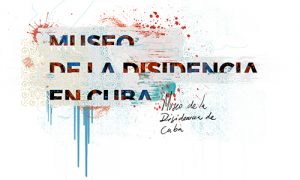 The Museum of Dissidence was co-founded by curator Yanelys Nuñez Leyv in Cuba. Nuñez Leyva was previously a staff writer at a magazine published by the ministry of culture until she was fired for her involvement with the museum. Despite this, she has continued her involvement with the museum organising radical public art projects and installations. The museum also seeks to reclaim a positive notion of the word “dissident” in Cuba.
The Museum of Dissidence was co-founded by curator Yanelys Nuñez Leyv in Cuba. Nuñez Leyva was previously a staff writer at a magazine published by the ministry of culture until she was fired for her involvement with the museum. Despite this, she has continued her involvement with the museum organising radical public art projects and installations. The museum also seeks to reclaim a positive notion of the word “dissident” in Cuba.
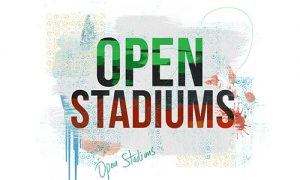 The women-run campaign Open Stadiums asserts a woman’s rights to attend public sporting events in Iran. The campaign challenges the country’s current religious and political regime while engaging women in human rights conversations previously deemed unimportant. Iranian women face many restrictions in public spaces and Open Stadiums has generated conversations on their right to attend public events which is currently a taboo in the country.
The women-run campaign Open Stadiums asserts a woman’s rights to attend public sporting events in Iran. The campaign challenges the country’s current religious and political regime while engaging women in human rights conversations previously deemed unimportant. Iranian women face many restrictions in public spaces and Open Stadiums has generated conversations on their right to attend public events which is currently a taboo in the country.
 Digital Rights Foundation is a cyber-harassment hotline based in Pakistan that helped over one thousand women in its first year. DRF provides a harassment helpline team which includes a digital security expert, a trained lawyer and a qualified psychologist, all of which can provide specialised assistance to women.
Digital Rights Foundation is a cyber-harassment hotline based in Pakistan that helped over one thousand women in its first year. DRF provides a harassment helpline team which includes a digital security expert, a trained lawyer and a qualified psychologist, all of which can provide specialised assistance to women.
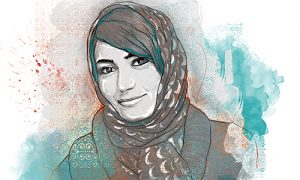 Digital Activism nominee Fereshteh Forough is the founder of Code to Inspire, a project that helps women and girls learn to code. The programme fosters female economic independence and broaden commercial opportunities for women in a patricahal society.
Digital Activism nominee Fereshteh Forough is the founder of Code to Inspire, a project that helps women and girls learn to code. The programme fosters female economic independence and broaden commercial opportunities for women in a patricahal society.
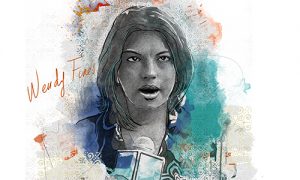 Journalist Wendy Funes risks her life for the right to report in Honduras. Journalists in the country face a harsh and repressive environment, but Funes continues to report on corruption, injustice and violence against women in a country where one woman on average is killed every 16 hours. [/vc_column_text][/vc_column][/vc_row][vc_row][vc_column][vc_basic_grid post_type=”post” max_items=”2″ element_width=”12″ grid_id=”vc_gid:1520503493497-3165bd85-48fb-3″ taxonomies=”10735″][/vc_column][/vc_row]
Journalist Wendy Funes risks her life for the right to report in Honduras. Journalists in the country face a harsh and repressive environment, but Funes continues to report on corruption, injustice and violence against women in a country where one woman on average is killed every 16 hours. [/vc_column_text][/vc_column][/vc_row][vc_row][vc_column][vc_basic_grid post_type=”post” max_items=”2″ element_width=”12″ grid_id=”vc_gid:1520503493497-3165bd85-48fb-3″ taxonomies=”10735″][/vc_column][/vc_row]
14 Feb 2018 | Awards, News and features, Press Releases
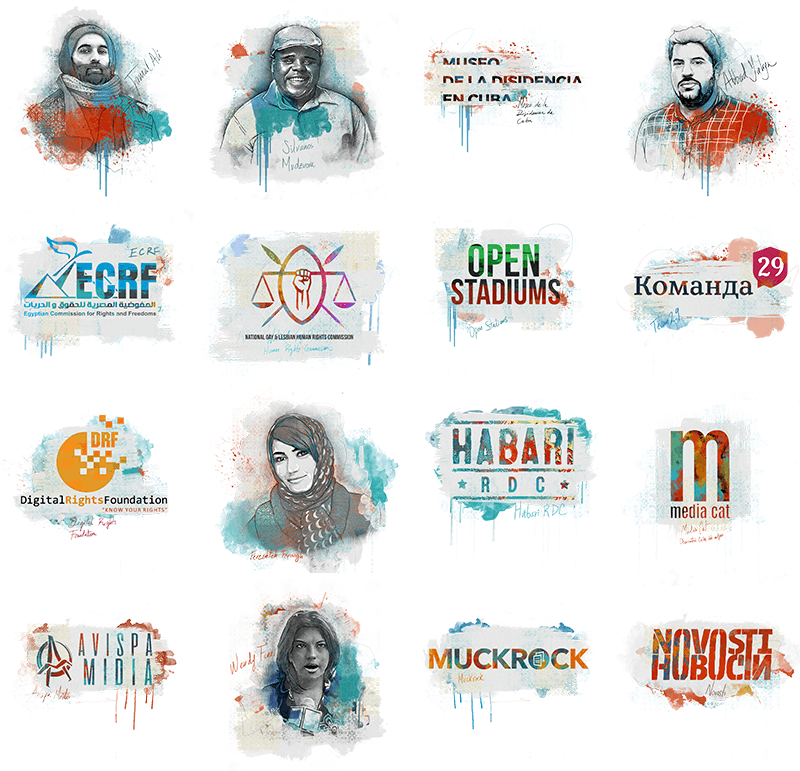
- Judges include Serpentine CEO Yana Peel; BBC journalist Razia Iqbal
- Sixteen courageous individuals and organisations who fight for freedom of expression in every part of the world
An exiled Azerbaijani rapper who uses his music to challenge his country’s dynastic leadership, a collective of Russian lawyers who seek to uphold the rule of law, an Afghan seeking to economically empower women through computer coding and a Honduran journalist who goes undercover to expose her country’s endemic corruption are among the courageous individuals and organisations shortlisted for the 2018 Index on Censorship Freedom of Expression Awards Fellowships.
Drawn from more than 400 crowdsourced nominations, the shortlist celebrates artists, writers, journalists and campaigners overcoming censorship and fighting for freedom of expression against immense obstacles. Many of the 16 shortlisted nominees face regular death threats, others criminal prosecution or exile.
“Free speech is vital in creating a tolerant society. These nominees show us that even a small act can have a major impact. These groups and individuals have faced the harshest penalties for standing up for their beliefs. It’s an honour to recognise them,” said Jodie Ginsberg, CEO of campaigning nonprofit Index on Censorship.
Awards fellowships are offered in four categories: arts, campaigning, digital activism and journalism.
Nominees include rapper Jamal Ali who challenged the authoritarian Azerbaijan government in his music – and whose family was targeted as a result; Team 29, an association of lawyers and journalists that defends those targeted by the state for exercising their right to freedom of speech in Russia; Fereshteh Forough, founder and executive director of Code to Inspire, a coding school for girls in Afghanistan; Wendy Funes, an investigative journalist from Honduras who regularly risks her life for her right to report on what is happening in the country.
Other nominees include The Museum of Dissidence, a public art project and website celebrating dissent in Cuba; the National Gay and Lesbian Human Rights Commission, a group proactively challenging LGBTI discrimination through the Kenya’s courts; Mèdia.cat, a Catalan website highlighting media freedom violations and investigating under-reported or censored stories; Novosti, a weekly Serbian-language magazine in Croatia that deals with a whole range of topics.
Judges for this year’s awards, now in its 18th year, are BBC reporter Razia Iqbal, CEO of the Serpentine Galleries Yana Peel, founder of Raspberry Pi CEO Eben Upton and Tim Moloney QC, deputy head of Doughty Street Chambers.
Iqbal says: “In my lifetime, there has never been a more critical time to fight for freedom of expression. Whether it is in countries where people are imprisoned or worse, killed, for saying things the state or others, don’t want to hear, it continues to be fought for and demanded. It is a privilege to be associated with the Index on Censorship judging panel.”
Winners, who will be announced at a gala ceremony in London on 19 April, become Index on Censorship Freedom of Expression Awards Fellows and are given year-long support for their work, including training in areas such as advocacy and communications.
“This award feels like a lifeline. Most of our challenges remain the same, but this recognition and the fellowship has renewed and strengthened our resolve to continue reporting, especially on the bleakest of days. Most importantly, we no longer feel so alone,” 2017 Freedom of Expression Awards Journalism Fellow Zaheena Rasheed said.
This year, the Freedom of Expression Awards are being supported by sponsors including SAGE Publishing, Google, Private Internet Access, Edwardian Hotels, Vodafone, media partner VICE News, Doughty Street Chambers and Psiphon. Illustrations of the nominees were created by Sebastián Bravo Guerrero.
Notes for editors:
- Index on Censorship is a UK-based non-profit organisation that publishes work by censored writers and artists and campaigns against censorship worldwide.
- More detail about each of the nominees is included below.
- The winners will be announced at a ceremony in London on 19 April.
For more information, or to arrange interviews with any of those shortlisted, please contact Sean Gallagher on 0207 963 7262 or [email protected].
More biographical information and illustrations of the nominees are available at indexoncensorship.org/indexawards2018.
Index on Censorship Freedom of Expression Awards Fellowship nominees 2018
ARTS

Jamal Ali
Azerbaijan
Jamal Ali is an exiled rapper and rock musician with a history of challenging Azerbaijan’s authoritarian regime. Ali was one of many who took to the streets in 2012 to protest spending around the country’s hosting of the Eurovision song contest. Detained and tortured for his role in the protests, he went into exile after his life was threatened. Ali has persisted in releasing music critical of the country’s dynastic leadership. Following the release of one song, Ali’s mother was arrested in a senseless display of aggression. In provoking such a harsh response with a single action, Ali has highlighted the repressive nature of the regime and its ruthless desire to silence all dissent.
Silvanos Mudzvova
Zimbabwe
Playwright and activist Silvanos Mudzvova uses performance to protest against the repressive regime of recently toppled President Robert Mugabe and to agitate for greater democracy and rights for his country’s LGBT community. Mudzvova specialises in performing so-called “hit-and-run” actions in public places to grab the attention of politicians and defy censorship laws, which forbid public performances without police clearance. His activism has seen him be traumatically abducted: taken at gunpoint from his home he was viciously tortured with electric shocks. Nonetheless, Mudzvova has resolved to finish what he’s started and has been vociferous about the recent political change in Zimbabwe.
The Museum of Dissidence
Cuba
The Museum of Dissidence is a public art project and website celebrating dissent in Cuba. Set up in 2016 by acclaimed artist Luis Manuel Otero Alcántara and curator Yanelys Nuñez Leyva, their aim is to reclaim the word “dissident” and give it a positive meaning in Cuba. The museum organises radical public art projects and installations, concentrated in the poorer districts of Havana. Their fearlessness in opening dialogues and inhabiting public space has led to fierce repercussions: Nuñez was sacked from her job and Otero arrested and threatened with prison for being a “counter-revolutionary.” Despite this, they persist in challenging Cuba’s restrictions on expression.
Abbad Yahya
Palestine
Abbad Yahya is a Palestinian author whose fourth novel, Crime in Ramallah, was banned by the Palestinian Authority in 2017. The book tackles taboo issues such as homosexuality, fanaticism and religious extremism. It provoked a rapid official response and all copies of the book were seized. The public prosecutor issued a summons for questioning against Yahya while the distributor of the novel was arrested and interrogated. Yahya also received threats on social media and copies of the book were burned. Despite this, he has spent the last year giving interviews to international and Arab press and raising awareness of freedom of expression and the lives of young people in the West Bank and Gaza, particularly in relation to their sexuality.
CAMPAIGNING

Egyptian Commission for Rights and Freedoms
Egypt
The Egyptian Commission for Rights and Freedoms or ECRF is one of the few human rights organisations still operating in a country which has waged an orchestrated campaign against independent civil society groups. Egypt is becoming increasingly hostile to dissent, but ECRF continues to provide advocacy, legal support and campaign coordination, drawing attention to the many ongoing human rights abuses under the autocratic rule of President Abdel Fattah-el-Sisi. Their work has seen them subject to state harassment, their headquarters have been raided and staff members arrested. ECRF are committed to carrying on with their work regardless of the challenges.
National Gay and Lesbian Human Rights Commission
Kenya
The National Gay and Lesbian Human Rights Commission is the only organisation in Kenya proactively challenging and preventing LGBTI discrimination through the country’s courts. Even though being homosexual isn’t illegal in Kenya, homosexual acts are. Homophobia is commonplace and men who have sex with men can be punished by up to 14 years in prison, and while no specific laws relate to women, former Prime Minister Raila Odinga has said lesbians should also be imprisoned. NGLHRC has had an impact by successfully lobbying MPs to scrap a proposed anti-homosexuality bill and winning agreement from the Kenya Medical Association to stop forced anal examination of clients “even in the guise of discovering crimes.”
Open Stadiums
Iran
The women behind Open Stadiums risk their lives to assert a woman’s right to attend public sporting events in Iran. The campaign that challenges the country’s political and religious regime, and engages women in an issue many human rights activists have previously thought unimportant. Iranian women face many restrictions on using public space. Open Stadiums has generated broad support for their cause in and out of the country. As a result, MPs and people in power are beginning to talk about women’s rights to attend sporting events in a way that would have been taboo before.
Team 29
Russia
Team 29 is an association of lawyers and journalists that defends those targeted by the state for exercising their right to freedom of speech in Russia. It is crucial work in a climate where hundreds of civil society organisations have been forced to close and where increasingly tight restrictions have been placed on public protest and political dissent since mass demonstrations rocked Russia in 2012. Team 29 conducts about 50 court cases annually, many involving accusations of high treason. Aside from litigation, they offer legal guides for activists, advice on what to do when state security comes for you and how to conduct yourself under interrogation.
DIGITAL ACTIVISM

Digital Rights Foundation
Pakistan
In late 2016, the Digital Rights Foundation established a cyber-harassment helpline that supported more than a thousand women in its first year of operation alone. Women make up only about a quarter of the online population in Pakistan but routinely face intense bullying including the use of revenge porn, blackmail, and other kinds of harassment. Often afraid to report how badly they are treated, women react by withdrawing from online spaces. To counter this, DRF’s Cyber Harassment Helpline team includes a qualified psychologist, digital security expert, and trained lawyer, all of whom provide specialised assistance.
Fereshteh Forough
Afghanistan
Fereshteh Forough is the founder and executive director of Code to Inspire, a coding school for girls in Afghanistan. Founded in 2015, this innovative project helps women and girls learn computer programming with the aim of tapping into commercial opportunities online and fostering economic independence in a country that remains a highly patriarchal and conservative society. Forough believes that with programming skills, an internet connection and using bitcoin for currency, Afghan women can not only create wealth but challenge gender roles and gain independence.
Habari RDC
Congo
Launched in 2016, Habari RDC is a collective of more than 100 young Congolese bloggers and web activists, who use Facebook, Twitter and YouTube to give voice to the opinions of young people from all over the Democratic Republic of Congo. Their site posts stories and cartoons about politics, but it also covers football, the arts and subjects such as domestic violence, child exploitation, the female orgasm and sexual harassment at work. Habari RDC offers a distinctive collection of funny, angry and modern Congolese voices, who are demanding to be heard.
Mèdia.cat
Spain
Mèdia.cat is a Catalan website devoted to highlighting media freedom violations and investigating under-reported or censored stories. Unique in Spain, it was a particularly significant player in 2017 when the heightened atmosphere in Catalonia over the disputed independence referendum brought issues of censorship and the impartiality of news under the spotlight. The website provides an online platform that catalogues systematically, publicly and in real time censorship perpetrated in the region. Its map on censorship offers a way for journalists to report on abuses they have personally suffered.
JOURNALISM

Avispa Midia
Mexico
Avispa Midia is an independent online magazine that prides itself on its daring use of multimedia techniques to bring alive the political, economic and social worlds of Mexico and Latin America. It specialises in investigations into organised criminal gangs and the paramilitaries behind mining mega-projects, hydroelectric dams and the wind and oil industry. Many of Avispa’s reports in the last 12 months have been focused on Mexico and Central America, where the media group has helped indigenous and marginalised communities report on their own stories by helping them learn to do audio and video editing. In the future, Avispa wants to create a multimedia journalism school to help indigenous and young people inform the world what is happening in their region, and break the stranglehold of the state and large corporations on the media.
Wendy Funes
Honduras
Wendy Funes is an investigative journalist from Honduras who regularly risks her life for her right to report on what is happening in the country, an extremely harsh environment for reporters. Two journalists were murdered in 2017 and her father and friends are among those who have met violent deaths in the country – killings for which no one has ever been brought to justice. Funes meets these challenges with creativity and determination. For one article she had her own death certificate issued to highlight corruption. Funes also writes about violence against women, a huge problem in Honduras where one woman is killed every 16 hours.
MuckRock
United States
MuckRock is a non-profit news site used by journalists, activists and members of the public to request and share US government documents in pursuit of more transparency. MuckRock has shed light on government surveillance, censorship and police militarisation among other issues. MuckRock produces its own reporting, and helps others learn more about requesting information. Last year the site produced a Freedom of Information Act 4 Kidz lesson plan to help educators to start discussions about government transparency. Since then, they have expanded their reach to Canada. The organisation hopes to continue increasing their impact by putting transparency tools in the hands of journalists, researchers and ordinary citizens.
Novosti
Croatia
Novosti is a weekly Serbian-language magazine in Croatia. Although fully funded as a Serb minority publication by the Serbian National Council, it deals with a whole range of topics, not only those directly related to the minority status of Croatian Serbs. In the past year, the outlet’s journalists have faced attacks and death threats mainly from the ultra-conservative far-right. For its reporting, the staff of Novosti have been met with protest under the windows of the magazine’s offices shouting fascist slogans and anti-Serbian insults, and told they would end up killed like Charlie Hebdo journalists. Despite the pressure, the weekly persists in writing the truth and defending freedom of expression.

 The Museum of Dissidence
The Museum of Dissidence The women-run campaign
The women-run campaign  Digital Rights Foundation
Digital Rights Foundation Digital Activism nominee
Digital Activism nominee  Journalist
Journalist 



